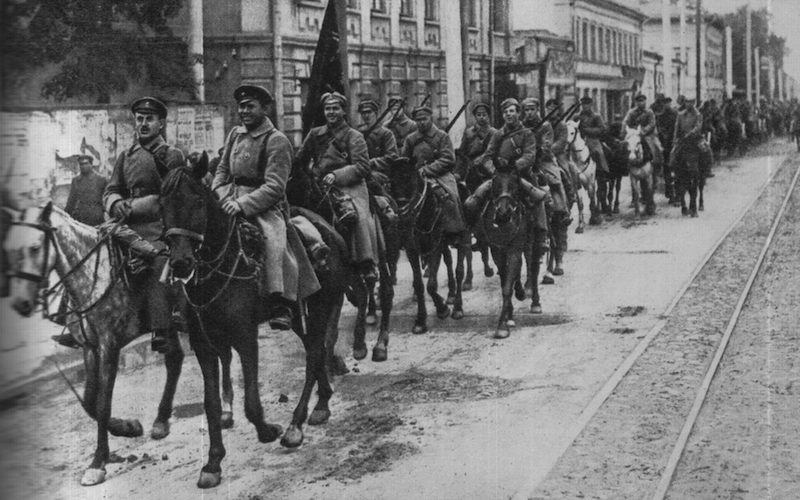Russian Civil War
Date: 1917 – 1921
Location: Russia
Estimated casualties: 5,000,000 – 9,000,000
Not all internal conflicts are based on religious or ethnic ties. Sometimes they are simply based on political disagreements. That was the case in the Russian Civil War, which took place between 1917 and 1921. The war was a reaction to the Bolshevik (Communist) leadership, which originated from a split in the Social Democratic Party.
The Treaty of Brest-Litovsk ended a war between Russia and Germany in 1918. The leader of the Bolsheviks, Lenin, wanted a treaty signed at virtually any price so they could work on internal improvements within Russia. The terms of the treaty were very harsh in taking a significant portion of land, and the document displayed how weak the Bolsheviks actually were. In 1917, the Bolsheviks really only controlled Petrograd, Moscow, and the territory between the two cities because many parts of the Russian empire took the fall of Nicholas II as an opportunity to declare their independence.
The civil war was between the Whites (who were helped by the Germans) and the Bolshevik Red Army. Nicholas II and his family were moved to Tobolski and then Yekaterinburg. Fear of the anti-Bolshevik forces (the Whites) sparked the attacks that led to their deaths in July 1918 (even the children). The Red Army eventually won over the Whites, making Communism the political regime. Historians believe that part of the reason that they won was because they were communist fanatics who were extremely dedicated to their cause.
They were prepared to do whatever was necessary to help the revolution. In fact, even after the civil war, Lenin ordered that many people who may be against the Communist cause be eliminated in what is commonly referred to as the “Red Terror.”
Expand your knowledge universe in just 5 minutes a day via bite-sized email courses.
Share with friends:

